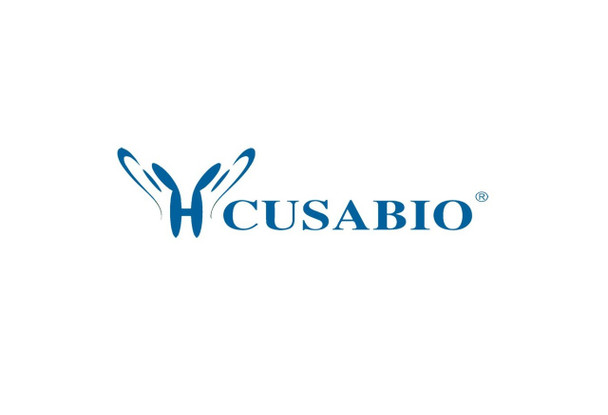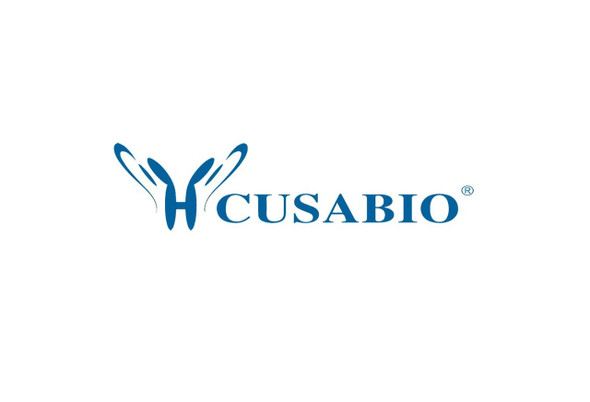Cusabio Human Recombinants
Recombinant Human Plexin-A1 (PLXNA1), partial | CSB-EP883448HU
- SKU:
- CSB-EP883448HU
- Availability:
- 3 - 7 Working Days
Description
Recombinant Human Plexin-A1 (PLXNA1), partial | CSB-EP883448HU | Cusabio
Alternative Name(s): Semaphorin receptor NOV
Gene Names: PLXNA1
Research Areas: Neuroscience
Organism: Homo sapiens (Human)
AA Sequence: LNAGSDVAVSVGGRPCSFSWRNSREIRCLTPPGQSPGSAPIIININRAQLTNPEVKYNYTEDPTILRIDPEWSINSGGTLLTVTGTNLATVREPRIRAKYGGIERENGCLVYNDTTMVCRAPSVANPVRSPPELGERPDELGFVMDNVRSLLVLNSTSFLYYPDPVL
Source: E.coli
Tag Info: N-terminal 6xHis-tagged
Expression Region: 986-1152aa
Sequence Info: Partial
MW: 22.3 kDa
Purity: Greater than 90% as determined by SDS-PAGE.
Relevance: Coreceptor for SA3A, SA3C, SA3F and SA6D. Necessary for signaling by class 3 saphorins and subsequent rodeling of the cytoskeleton. Plays a role in axon guidance, invasive growth and cell migration. Class 3 saphorins bind to a complex composed of a neuropilin and a plexin. The plexin modulates the affinity of the complex for specific saphorins, and its Cytoplasmic domain is required for the activation of down-stream signaling events in the cytoplasm .
Reference: The DNA sequence, annotation and analysis of human chromosome 3.Muzny D.M., Scherer S.E., Kaul R., Wang J., Yu J., Sudbrak R., Buhay C.J., Chen R., Cree A., Ding Y., Dugan-Rocha S., Gill R., Gunaratne P., Harris R.A., Hawes A.C., Hernandez J., Hodgson A.V., Hume J. , Jackson A., Khan Z.M., Kovar-Smith C., Lewis L.R., Lozado R.J., Metzker M.L., Milosavljevic A., Miner G.R., Morgan M.B., Nazareth L.V., Scott G., Sodergren E., Song X.-Z., Steffen D., Wei S., Wheeler D.A., Wright M.W., Worley K.C., Yuan Y., Zhang Z., Adams C.Q., Ansari-Lari M.A., Ayele M., Brown M.J., Chen G., Chen Z., Clendenning J., Clerc-Blankenburg K.P., Chen R., Chen Z., Davis C., Delgado O., Dinh H.H., Dong W., Draper H., Ernst S., Fu G., Gonzalez-Garay M.L., Garcia D.K., Gillett W., Gu J., Hao B., Haugen E., Havlak P., He X., Hennig S., Hu S., Huang W., Jackson L.R., Jacob L.S., Kelly S.H., Kube M., Levy R., Li Z., Liu B., Liu J., Liu W., Lu J., Maheshwari M., Nguyen B.-V., Okwuonu G.O., Palmeiri A., Pasternak S., Perez L.M., Phelps K.A., Plopper F.J., Qiang B., Raymond C., Rodriguez R., Saenphimmachak C., Santibanez J., Shen H., Shen Y., Subramanian S., Tabor P.E., Verduzco D., Waldron L., Wang J., Wang J., Wang Q., Williams G.A., Wong G.K.-S., Yao Z., Zhang J., Zhang X., Zhao G., Zhou J., Zhou Y., Nelson D., Lehrach H., Reinhardt R., Naylor S.L., Yang H., Olson M., Weinstock G., Gibbs R.A.Nature 440:1194-1198(2006)
Storage: The shelf life is related to many factors, storage state, buffer ingredients, storage temperature and the stability of the protein itself. Generally, the shelf life of liquid form is 6 months at -20?/-80?. The shelf life of lyophilized form is 12 months at -20?/-80?.
Notes: Repeated freezing and thawing is not recommended. Store working aliquots at 4? for up to one week.
Function: Coreceptor for SEMA3A, SEMA3C, SEMA3F and SEMA6D. Necessary for signaling by class 3 semaphorins and subsequent remodeling of the cytoskeleton. Plays a role in axon guidance, invasive growth and cell migration. Class 3 semaphorins bind to a complex composed of a neuropilin and a plexin. The plexin modulates the affinity of the complex for specific semaphorins, and its cytoplasmic domain is required for the activation of down-stream signaling events in the cytoplasm (By similarity).
Involvement in disease:
Subcellular Location: Cell membrane, Single-pass type I membrane protein
Protein Families: Plexin family
Tissue Specificity: Detected in fetal brain, lung, liver and kidney.
Paythway: Inhibitorsofaxonalregeneration
Form: Liquid or Lyophilized powder
Buffer: If the delivery form is liquid, the default storage buffer is Tris/PBS-based buffer, 5%-50% glycerol. If the delivery form is lyophilized powder, the buffer before lyophilization is Tris/PBS-based buffer, 6% Trehalose, pH 8.0.
Reconstitution: We recommend that this vial be briefly centrifuged prior to opening to bring the contents to the bottom. Please reconstitute protein in deionized sterile water to a concentration of 0.1-1.0 mg/mL.We recommend to add 5-50% of glycerol (final concentration) and aliquot for long-term storage at -20?/-80?. Our default final concentration of glycerol is 50%. Customers could use it as reference.
Uniprot ID: Q9UIW2
HGNC Database Link: HGNC
UniGene Database Link: UniGene
KEGG Database Link: KEGG
STRING Database Link: STRING
OMIM Database Link: OMIM


-SDS__28245.1638526360.jpg?c=1)

-SDS__28245.1638526360.jpg?c=1)




